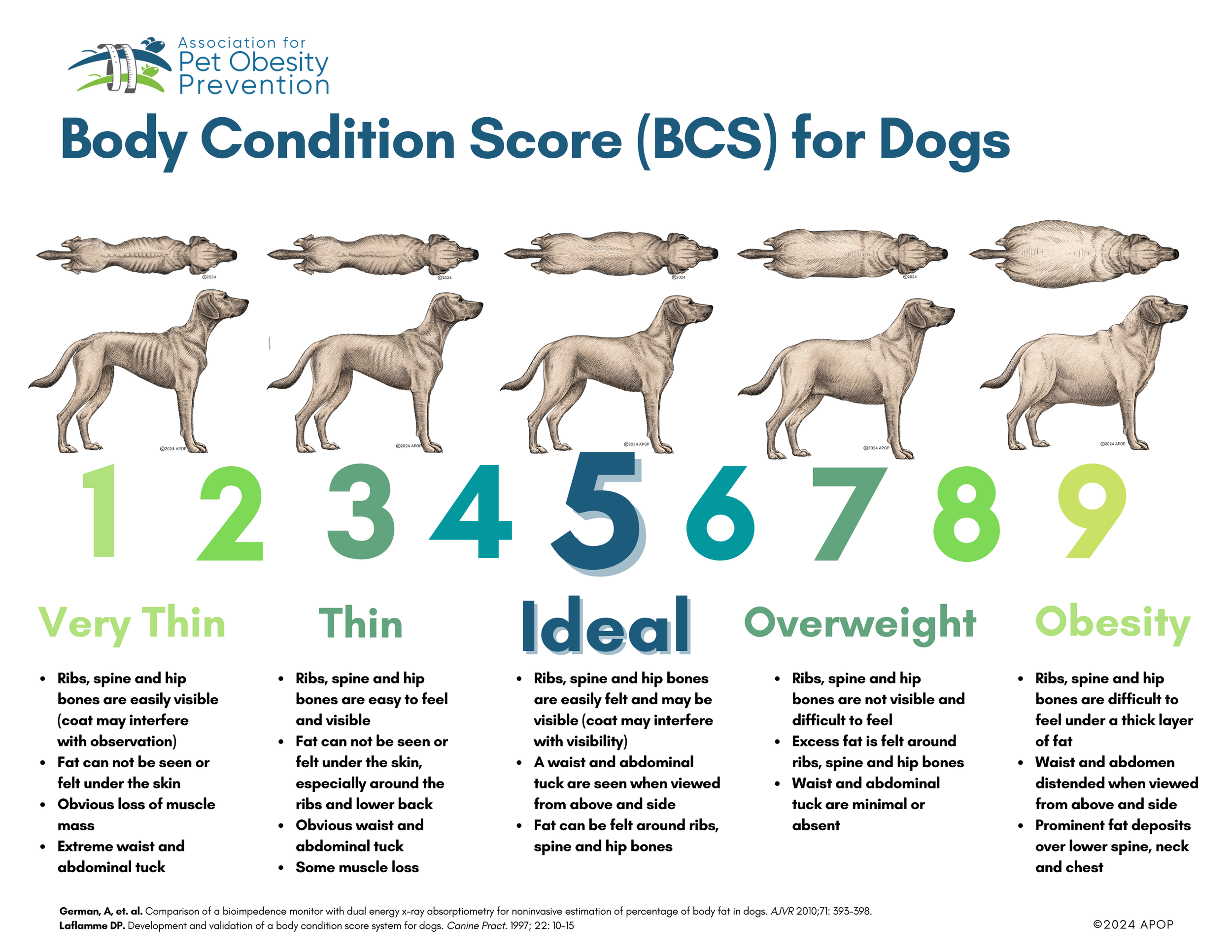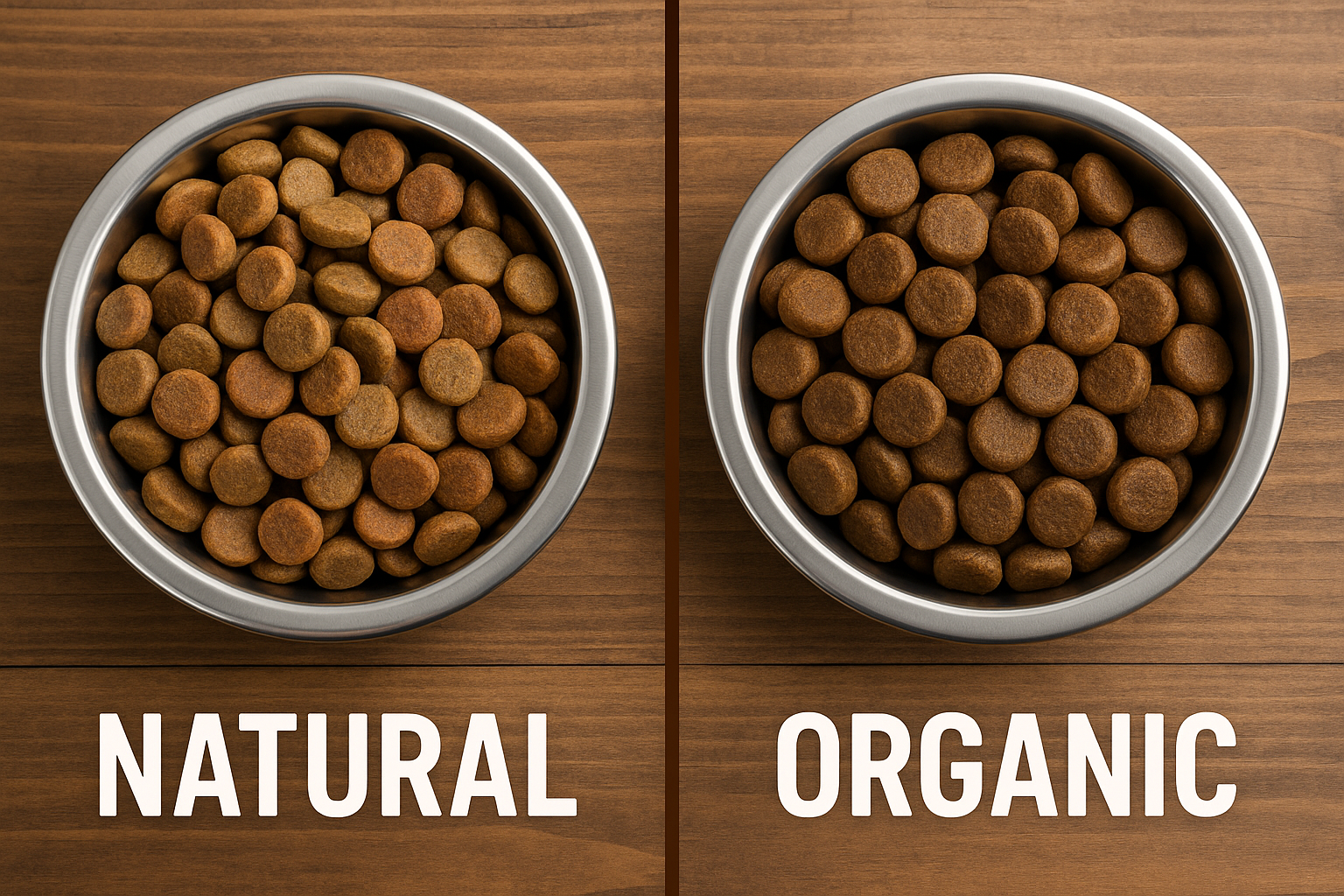What is a “body condition score”?
6 mins to read

When it comes to the health and well-being of pets, proper nutrition plays a pivotal role. However, understanding whether your pet is at an ideal weight isn’t as simple as checking a number on the scale. This is where the Body Condition Score (BCS) comes into play—a tool used by veterinarians to evaluate a pet’s body composition and overall health.
In this blog post, we’ll delve into what the Body Condition Score is, how it works, and why it’s an essential part of your pet’s nutrition and care.
What Is a Body Condition Score?
The Body Condition Score (BCS) is a standardized system used to assess a pet’s body fat and overall condition. It provides a visual and tactile way to determine whether an animal is underweight, overweight, or at an ideal weight.
The BCS typically ranges from:
• 1 to 5 (for some species)
• Or 1 to 9 (for others)
A score of 1 indicates extreme thinness, while the highest score, 5 or 9, reflects obesity. An ideal BCS is generally in the middle range, such as 3/5 or 4-5/9. This allows veterinarians to fine-tune dietary and exercise recommendations tailored to your pet’s needs.
How Is the BCS Determined?
Veterinarians evaluate the BCS by visually examining and palpating (feeling) the pet’s body. They assess areas like:
• Ribs: Can they be easily felt or are they covered by a thick fat layer?
• Waistline: Is there a visible tuck behind the ribs when viewed from above or the side?
• Abdominal fat pad: Is there excess fat hanging beneath the abdomen?
For animals with fur, such as cats and dogs, hands-on examination is crucial since their coats can hide changes in body fat.
Why Does the Body Condition Score Matter?
The BCS is a critical tool for monitoring a pet’s health because weight issues are tied to numerous health risks:
• Overweight or Obese Pets
Carrying extra weight can lead to issues such as diabetes, joint problems, heart disease, and a reduced lifespan.
• Underweight Pets
Pets that are too thin may suffer from malnutrition, weakened immune systems, and underlying health conditions that need attention.
By understanding and tracking your pet’s BCS, you can work with your veterinarian to adjust their diet, portion sizes, and activity levels to maintain optimal health.
The Role of Nutrition in Achieving an Ideal BCS
Proper nutrition is key to maintaining a healthy BCS. This means feeding your pet:
1. Appropriate Portions: Overfeeding or underfeeding can quickly shift your pet out of the ideal range.
2. Balanced Diets: Pets need the right mix of proteins, fats, carbohydrates, vitamins, and minerals to thrive.
3. Species-Specific Nutrition: Cats, dogs, and other species have unique dietary needs—what’s good for one isn’t necessarily good for another.
A veterinarian can create a customized nutrition plan based on your pet’s age, breed, activity level, and BCS.
Suggested Images for This Blog Post
1. BCS Chart Illustration: A simple 5-point or 9-point BCS chart showing visuals of underweight, ideal, and overweight pets.
2. Side-by-Side Comparison Photos: Images of a healthy pet vs. an overweight or underweight pet, highlighting differences in rib coverage and waistline.
3. Vet Assessing a Pet: A veterinarian palpating a dog or cat to evaluate body fat.
4. Pet Food and Measuring Cup: A visual reminder of the importance of portion control.
5. Active Pets: Images of pets playing or exercising, emphasizing the role of activity in maintaining a healthy BCS.
Takeaway
The Body Condition Score is more than just a number—it’s a vital tool for understanding your pet’s health and tailoring their care. Whether your furry friend needs to shed a few pounds, gain a little weight, or maintain their current condition, BCS monitoring combined with proper nutrition and regular veterinary check-ups ensures they live their healthiest life.
Want to know your pet’s BCS? Schedule a visit with your veterinarian today—they’ll help you develop a plan to keep your pet in tip-top shape!






